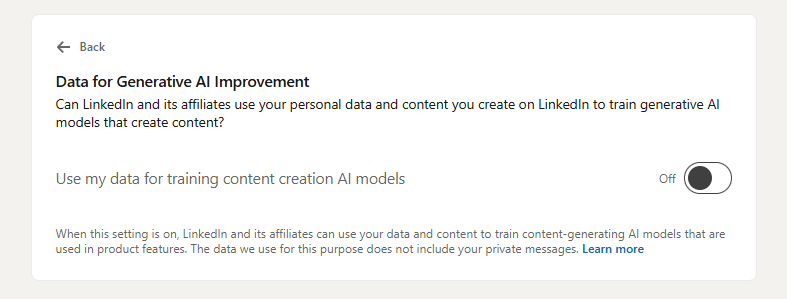LinkedIn is preparing to switch on generative-AI training that draws from European members’ data, setting November 3, 2025 as the go-live date. The company says it will rely on “legitimate interests” as its legal basis and will offer an opt-out so members can refuse use of their data for training—promising that private messages are excluded. The change applies across the EU/EEA, United Kingdom, and Switzerland.

This is a pivot from last year’s pause. In September 2024, after criticism and scrutiny, LinkedIn suspended plans to train models on data from EU & U.K. users.
What exactly will be used? LinkedIn’s help center explains that profile details and public content (posts, articles, comments) can feed content-generating models. The company also points to saved résumés and job-application answers as potential inputs to features that help members get discovered by recruiters, and it says it screens out minors it believes are in secondary school. It stresses that private messages are not part of the training set. The togglable setting appears as “Data for Generative AI Improvement,” and turning it off stops future use of your data for training, though it doesn’t unwind models already trained.
There’s a parallel—but separate—data-sharing change with Microsoft, LinkedIn’s parent. Beginning November 3, LinkedIn will expand, in some regions, the types of LinkedIn data shared with Microsoft so Microsoft can personalize ads. LinkedIn frames this as an “Affiliates” update; it says it will provide an additional opt-out where relevant. The two changes arrive together in the same terms refresh but follow different regional rules.
Outside EU/EEA/Switzerland and the UK, LinkedIn shares your information with our affiliate, Microsoft, for advertising purposes and with select partners for purposes of marketing LinkedIn’s products and services.
For European members, the legal hinge is GDPR’s “legitimate interests.” That route allows processing without consent if a company can show necessity, transparency, and an effective right to object. LinkedIn’s European Regional Privacy Notice update states that legitimate interests will be the basis for training content-generating models starting November 3, and that an objection (opt-out) will be honored via account settings.
Why now? LinkedIn has steadily added AI-assisted features—writing suggestions, profile summaries, recruiter tools—that benefit from domain-specific training. After the 2024 backlash (and a short-lived lawsuit in the U.S. that centered on fears about private messages—claims LinkedIn denied and that were later withdrawn), the company has come back with region-specific notices, a single, named training setting, and clearer language that private messages aren’t in scope.
Practically, here’s what changes on (or around) November 3 in Europe: if you do nothing, LinkedIn may use parts of your profile and public activity to refine the models behind its content-generation features. If you object in settings, that use should stop for future training. Your ability to use AI features doesn’t depend on opting in. In parallel, some—but not all—regions will see broader ad-personalization data sharing with Microsoft, governed by a separate control. Expect some differences in labels and availability by market; LinkedIn says not all features and settings roll out worldwide at once.

If you want out, the setting to look for is “Data for Generative AI Improvement” in Settings → Data privacy. The key is that the toggle affects future training, not models already built. Keep an eye out for any region-specific notices in your account banner over the next few weeks as the company aligns the U.K. with the EU schedule.
.png)




